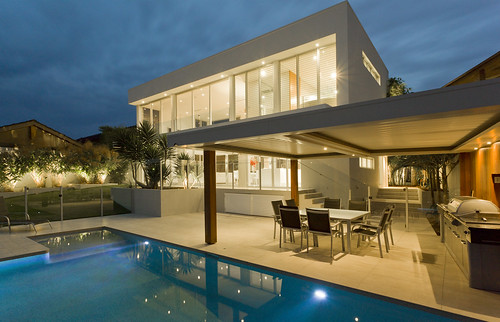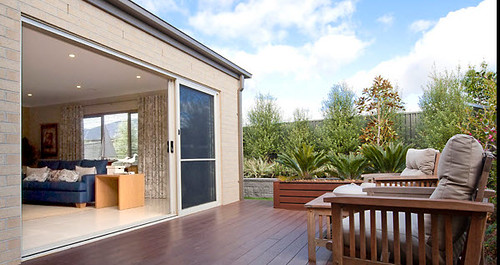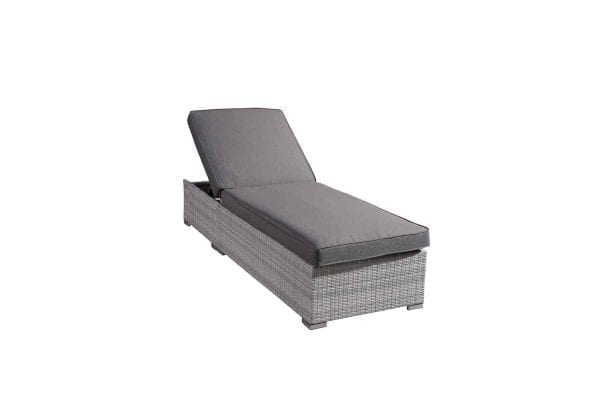 Turning an outdoor space into one that entices you and your guests as soon as the door opens is a renovation dream for most people. Building a good deck can enhance the beauty and function of your landscape, and blend with the outdoor living space to create the perfect area for entertaining, family activities and privacy.
Turning an outdoor space into one that entices you and your guests as soon as the door opens is a renovation dream for most people. Building a good deck can enhance the beauty and function of your landscape, and blend with the outdoor living space to create the perfect area for entertaining, family activities and privacy.
So want to spruce up your backyard with a striking deck? Building your dream deck is the ideal DIY home construction project – but whether you’re working with a builder or your buddies, good preparation will help you design and shape your ideal platform. After you have checked the legalities and completed the paper work, read on for our expert tips to help you in the process.
1. The Ingredients – Material Selection
Before you get those creative juices flowing for the layout of your deck, it’s important to decide what materials you want to use. The ingredients of your deck need to be durable to withstand the effects of harsh weather conditions including wind, sun and water, and also resilient to decay and insect damage.
Hardwoods are the most popular option but should be treated to get the most life out of it. Whilst they hold well in most weather conditions, the downside is it’s going to need work – cleaning, stripping, sanding and sealing over time to last the distance. Composite decking is a great alternative to this – made of a mix of waste wood, cellulose fibre and plastic it offers a maintenance free solution (only requires the occasional cleaning), whilst still proving its hard-wearing strength and upholding a warm, natural appearance. Unlike other wood materials, composite decking will not need to be stained, sealed or painted to maintain its durability.
If the right materials are used, a well-made deck will be structurally sound for years to come and effectively last the test of time.
 2. The Creative Juices – Location, Layout and Design
2. The Creative Juices – Location, Layout and Design
If you’re in a city suburban home and working with limited space, often this will dictate where your deck is going to be built. Consider scenic views if your property is fortunate enough to have them – a deck with a view can’t be topped. Other essential factors when deciding your location include adequate shading, weather conditions (wind, rain, sun and snow, proximity to your house and privacy options.
The design, shape and layout of your deck will be driven by its location and your budget, but don’t let that put you off as there are many ways around this. Depending on the purpose of you deck – entertaining, dining, pool area, privacy – depends on how you’re going to want it flow. You want your deck to compliment your existing home’s architecture rather than competing with it, it’s an extension of your home so should be coordinated with the surrounding landscape design and current look.
For entertaining and dining purposes, you may want to consider having an access from the kitchen to your deck to make life easier. If this isn’t possible, you can always look into an outdoor built-in kitchen which will make entertaining a breeze. For pool and spa areas or privacy requirements you may require extras like railings, a deck roof, privacy screens and gates.
After careful planning and design aspects have been considered, you’re ready to build your new dream deck. The sooner you build it, the sooner you can be relaxing with friends, lounging in the sun with a good book or cooking for the family – but, when is the right time to build?
It’s suggested that Spring is the perfect season to start building your deck – you don’t want to be battling the rain and wind Winter brings, and by the time Summer rolls round you want to be entertaining in your new outdoor space and cracking open a few beers. Whilst the building time can be entirely up to your requirements, scheduling a systematic approach can give you a good goal to work towards.
4. The Lighting Look
Lighting is the perfect mood changer and plays the role of not only upholding safety considerations, but also accentuating your newly designed deck and outdoor area. If you’re going to use your deck – especially in the evening, you’ll need strategically placed lighting and knowing where you need it, the fixture types and how much will affect your design and budget.
LED lighting will need to be wired so if you don’t have the DIY skills for this, you will need an electrician to install them. Solar lights are easy, but may not be bright enough so you can top railing posts with lanterns and surround the area with tiki torches for additional lighting solutions. For a more natural light, down-lights from trees can create a “moon light” affect and provide enough illumination for safety.
This article is written by Jayde Ferguson for WA Timber Decking, a company specialising in composite decking.



